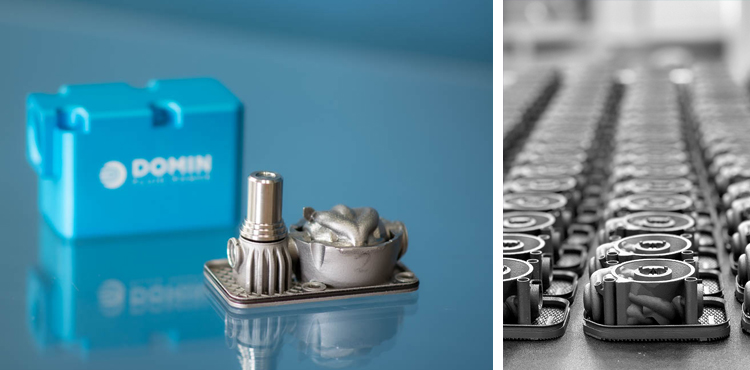
Current hydraulic systems rely on 20th century designs that are only 20% efficient. Domin is developing stateof-the-art technology which increases the efficiency of all systems by 400%. They are disrupting the hydraulics industry for the better, making companies and products more efficient, and together aim to save one gigatonne of CO2 every year by 2030.
One of the key enabling technologies being used by Domin is Additive Manufacturing, and in particular Laser Powder Bed Fusion. Having matured the design and proven the performance of their products, in particular direct drive servo-valves, they are now entering a phase of growth to volume production. To serve their customers across key sectors, including aerospace, they needed to validate their assumptions on AM yields, repeatability and operability, to provide both technical and commercial assurance that the process is production-rate ready.
Domin therefore needed to characterise and understand the following to allow ramp up and industrialisation of Additive Manufactured parts:

Domin worked closely with AM systems manufacturer and solutions provider, Renishaw plc, who supported this project by carrying out multiple back-to-back builds of identical platforms (simulating a production scenario). Each platform consisted of 12-off valve bodies and 8-off fatigue specimens. Domin took these plates and machined parts and specimens. They then tested the fatigue specimens to destruction on in-house rotating bend and pressure impulse rigs, whilst also assembling valve bodies into products and passing through an ISO accelerated life test. The data generated was compared to existing AM data, and analysed to assess impact on the product design and reliability.
To date, more than 300 parts have been built - 96% of parts completed with no visible defects. Initial valve tests have shown that detecting defects is difficult, so all parts currently undergo an accelerated life test to prove they meet infinite fatigue life (pressure pulsation) as per ISO10770. Fatigue testing was successful with very consistent fatigue properties across builds (std dev <5%). In-house testing continues.
Several technical lessons were learned to date in this project. Machine completion rate when ‘stressed’ appeared high for the geometries and builds tested (even despite high surface areas of build). Build-tobuild variation on fatigue properties appeared to be reasonably low and in control. With a few issues still to be overcome, these results are extremely positive, and it seems it will be very feasible to scale this technology to Production Builds production scale of thousands of parts per annum, per machine for Domin products at commercially viable costs.
DRAMA partner, Renishaw, was highly engaged with Domin at all times, and the project was supported by the Midlands Aerospace Association. The learning and output from this project is of great importance to Domin.